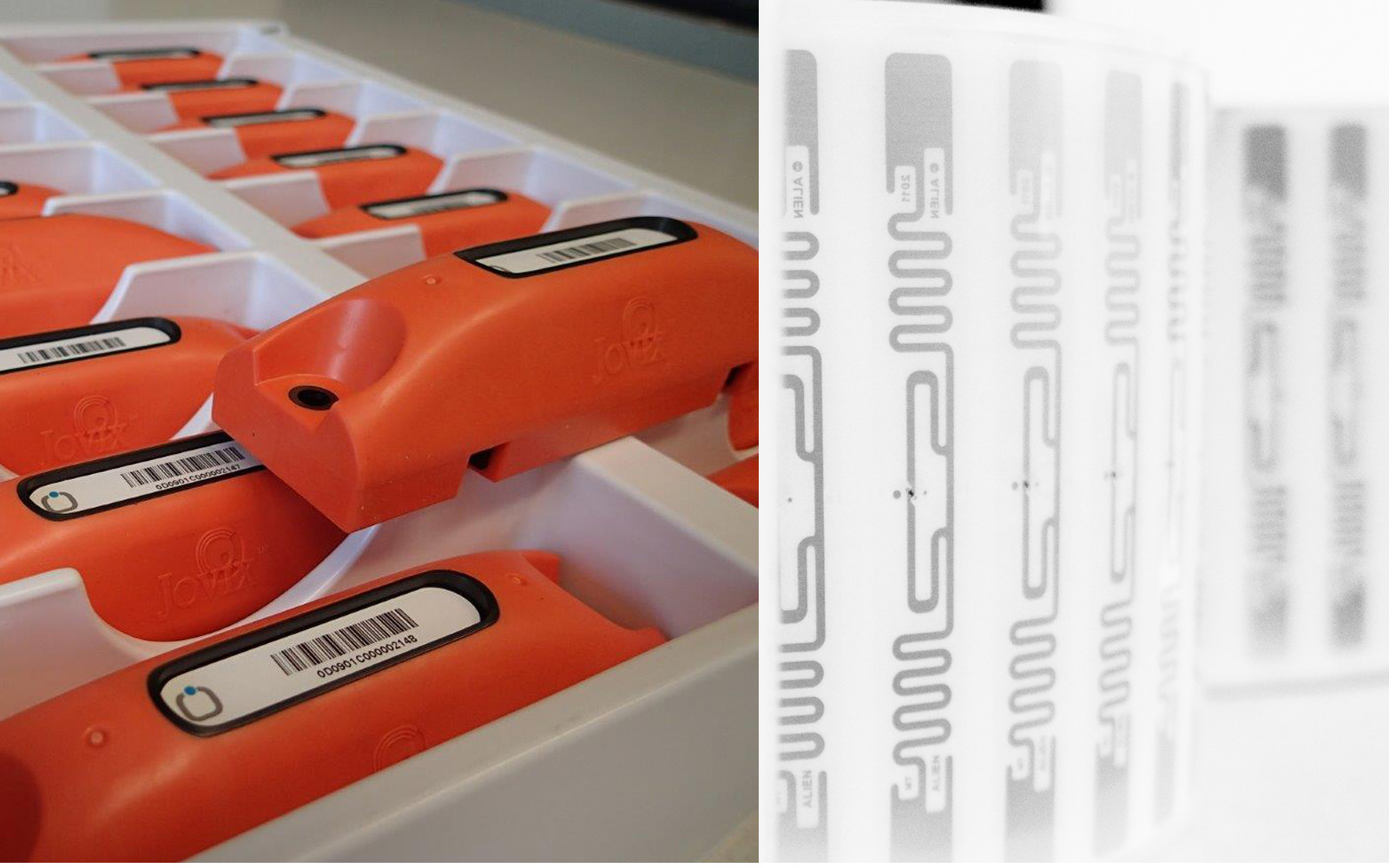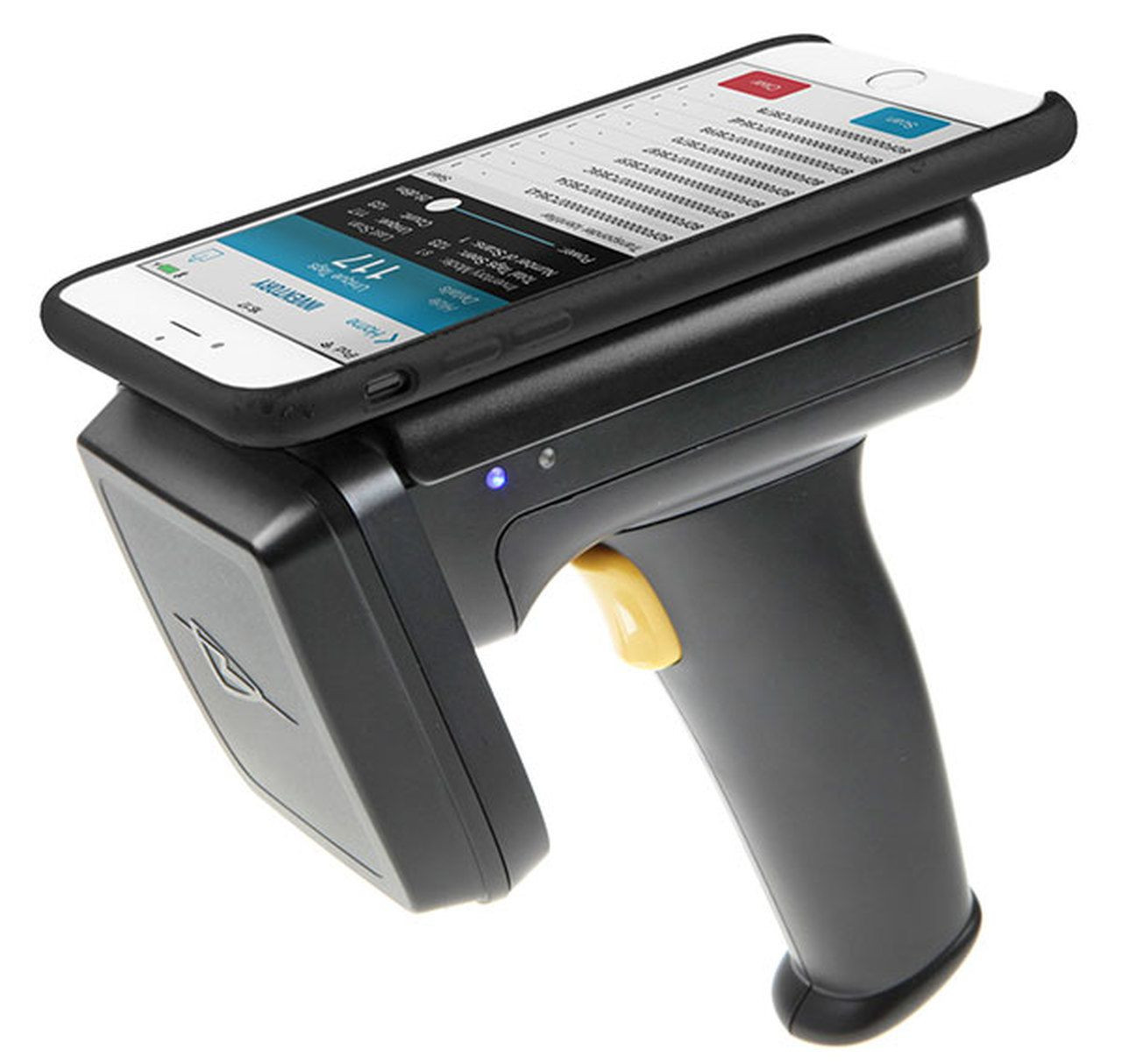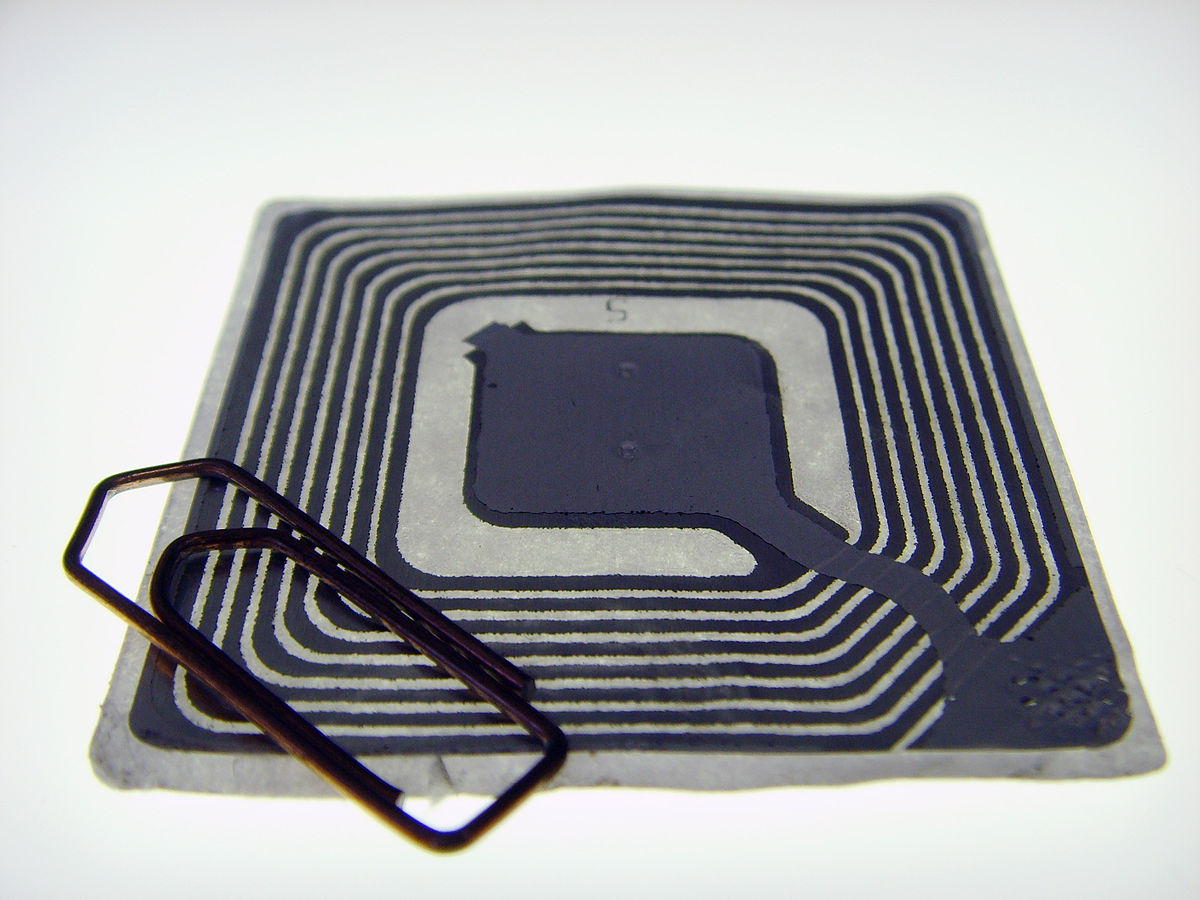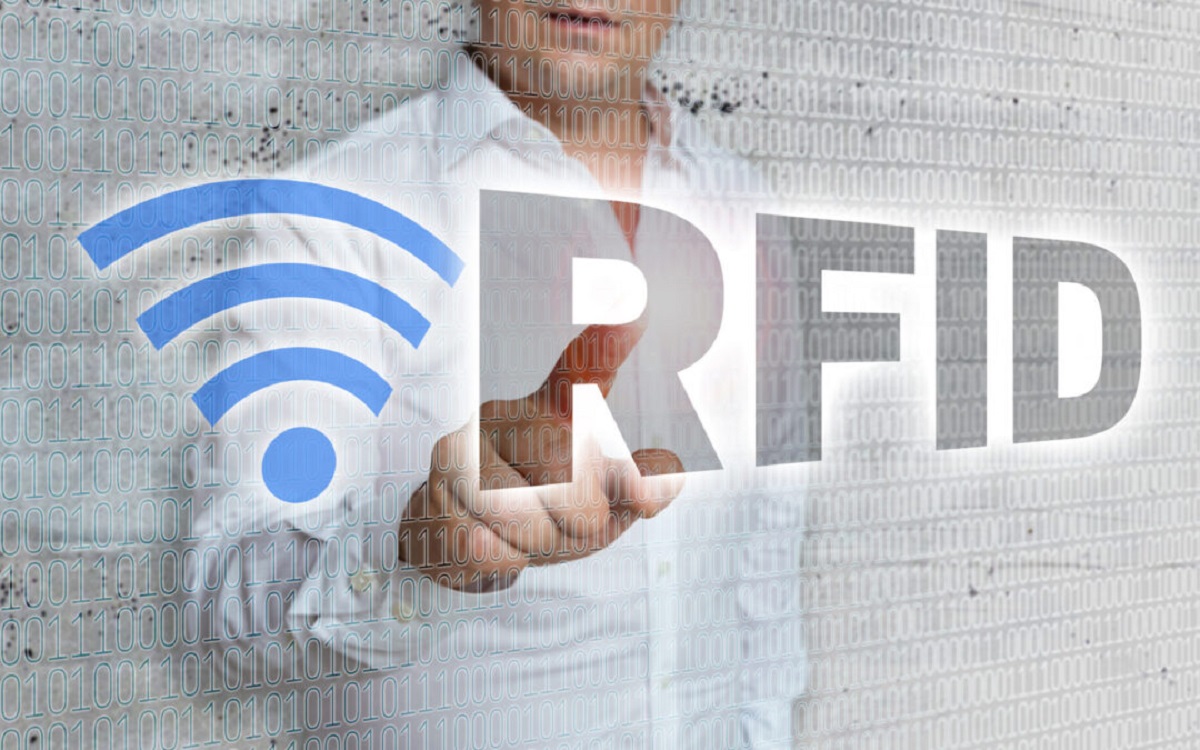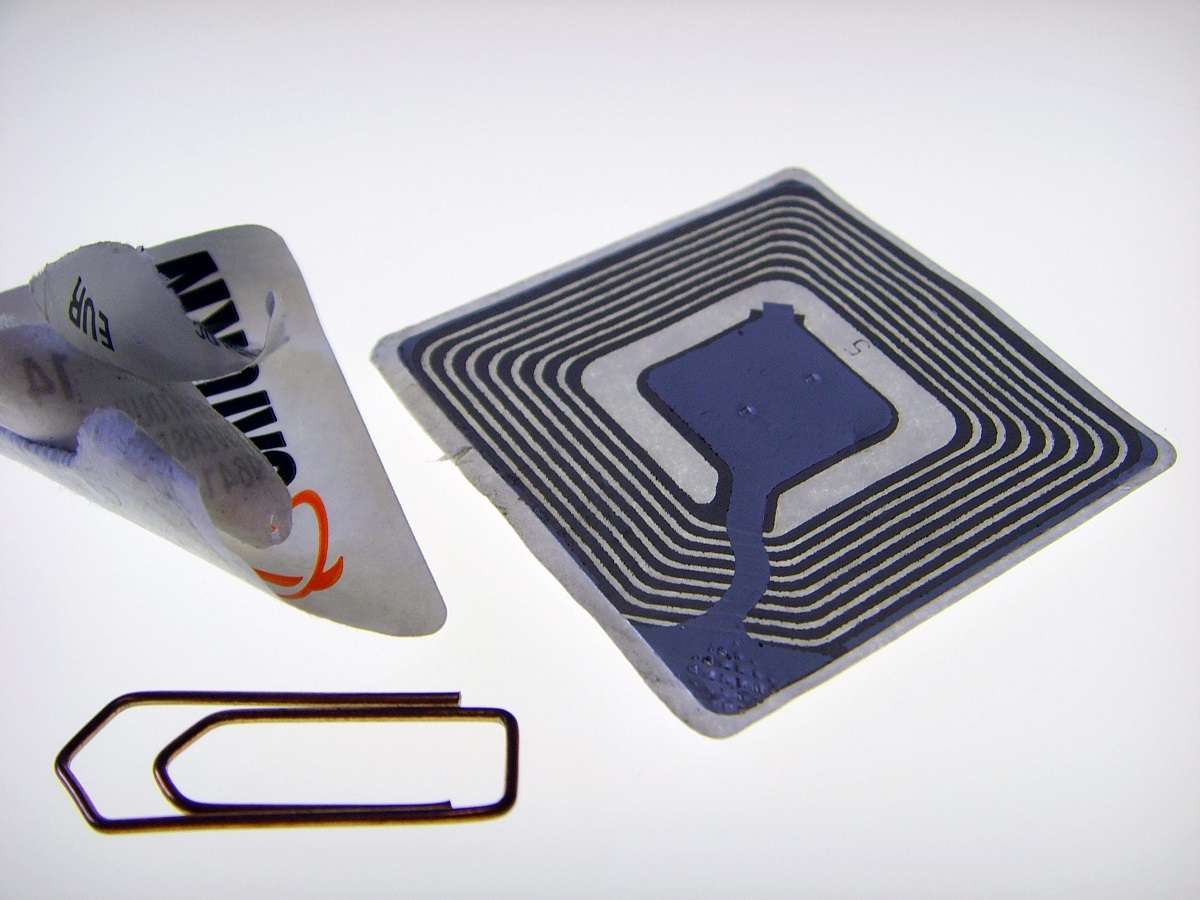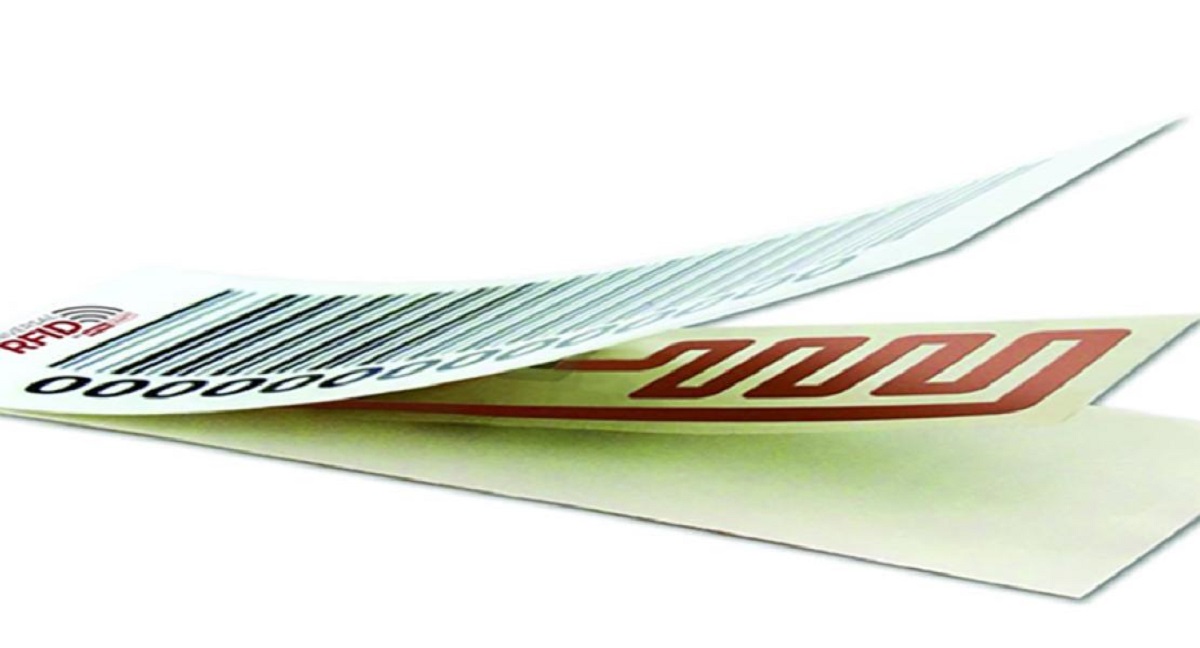Introduction
Welcome to this comprehensive guide on passive RFID tags. In this article, we will explore the world of RFID technology and delve into the fascinating realm of passive RFID tags. Whether you are a technophile, a business owner, or simply curious about the latest advancements in technology, this guide is here to provide you with valuable insights into the world of RFID.
Radio-Frequency Identification (RFID) technology has revolutionized various industries by enabling efficient tracking and identification of objects. It has garnered immense popularity due to its versatility and ability to streamline operations across different sectors. RFID technology utilizes electromagnetic fields to wirelessly transfer data between tags and readers, making it an invaluable tool in supply chain management, inventory control, asset tracking, and much more.
Passive RFID tags are a subset of RFID tags, known for their simplicity and cost-effectiveness. Unlike active RFID tags that include a power source, passive RFID tags rely on the power provided by the RFID reader to operate. This makes them lightweight, compact, and ideal for a wide range of applications.
In this article, we will explore the inner workings of passive RFID tags, their components, benefits, and real-world applications. By gaining a deeper understanding of this technology, you will be equipped with valuable insights to leverage its potential in your business or personal projects.
So, join us as we embark on this exciting journey into the realm of passive RFID tags and discover the endless possibilities they offer!
What is RFID?
RFID stands for Radio-Frequency Identification. It is a technology that allows the wireless transfer of data between an RFID tag and a reader. The RFID tag, also known as a transponder or a smart label, consists of a microchip and an antenna. The microchip stores and processes information, while the antenna enables communication with the RFID reader.
RFID technology enables the unique identification and tracking of objects using radio waves. The RFID reader emits radio waves, which are received by the antenna on the RFID tag. The tag then transmits its stored information back to the reader, allowing for real-time data capture and analysis.
One of the primary advantages of RFID is its ability to read multiple tags simultaneously, making it a highly efficient and practical solution for various applications. Unlike traditional barcode systems that require line-of-sight scanning, RFID tags can be read even when they are not visible or are enclosed within objects. This attribute makes RFID an ideal choice for scenarios where quick and accurate identification of multiple items is necessary, such as in inventory management and logistics operations.
RFID technology is employed across diverse industries, including retail, healthcare, manufacturing, transportation, and agriculture. Its applications range from tracking and tracing products throughout the supply chain, monitoring valuable assets, managing inventory levels, enhancing security systems, improving the accuracy of data collection, and enabling contactless payments.
By leveraging RFID technology, organizations can gain valuable insights, increase operational efficiency, reduce costs, and enhance customer experiences. The ability to accurately track and monitor assets and inventory in real-time facilitates streamlined operations and better decision-making, ultimately leading to improved productivity and profitability.
In the next section, we will explore how RFID technology works and the key components involved in its operation, providing you with a deeper understanding of this revolutionary technology.
How Does RFID Work?
RFID technology operates on the principle of using radio waves to wirelessly transfer data between an RFID tag and a reader. This technology consists of three main components: the RFID tag, the RFID reader, and the backend software.
The RFID tag contains a microchip that stores data and an antenna that receives and transmits radio waves. The microchip contains a unique identification number or other relevant information about the object it is attached to. The tag can either be active (powered by a battery) or passive (powered by the radio waves emitted by the reader).
When an RFID tag comes within range of an RFID reader, the reader emits radio frequency signals. These signals energize the antenna of the RFID tag, providing it with power. The energized tag then sends back a signal that contains the encoded information stored in its microchip. The reader captures this signal and transfers the data to the backend software for processing and analysis.
The backend software plays a crucial role in RFID systems. It collects the data from the readers, processes it, and integrates it with other systems or databases. The software can perform various tasks such as updating inventory levels, triggering alerts for low stock, generating reports, and analyzing trends in data to optimize operations.
RFID technology offers several advantages over traditional barcode systems. Unlike barcodes, RFID does not require line-of-sight scanning, allowing for faster and more efficient data capture. Multiple RFID tags can be read simultaneously, further enhancing speed and accuracy. Additionally, RFID tags can withstand harsh environments, such as extreme temperatures and moisture, making them suitable for a wide range of applications.
RFID technology finds applications in numerous industries, including retail, healthcare, logistics, manufacturing, and more. Its uses range from inventory management and supply chain optimization to asset tracking, access control, and contactless payment systems.
In the next section, we will explore the different types of RFID tags available, including the distinction between active and passive RFID tags. Understanding these variations will help you determine which type is best suited for your specific needs.
Types of RFID Tags
RFID tags come in different forms and variations, each designed to cater to specific requirements and applications. The two main types of RFID tags are active RFID tags and passive RFID tags.
Active RFID Tags:
Active RFID tags have their own power source, typically a battery, which allows them to transmit signals over longer distances. These tags can communicate with the RFID reader without relying on the reader’s power supply. Active RFID tags are often used in applications that require long-range identification and tracking, such as in fleet management or monitoring high-value assets.
Active RFID tags are known for their extended read range, which can reach up to several hundred feet. They also offer additional functionality, such as built-in sensors for temperature or humidity monitoring. However, the downside to active RFID tags is their higher cost and a limited battery life, which requires periodic replacement or recharging.
Passive RFID Tags:
Passive RFID tags do not have their own power source. Instead, they rely on the power supplied by the RFID reader to operate. When the RFID reader emits radio waves, the passive tag’s antenna captures the energy and uses it to power the microchip and send back the stored data to the reader. Passive RFID tags are cost-effective, lightweight, and have a longer lifespan compared to active tags.
Passive RFID tags are commonly used in various applications, such as inventory management, supply chain tracking, access control, and asset management. They are available in different form factors, including adhesive labels, key fobs, wristbands, and even clothing tags. Passive RFID tags are ideal for short to medium-range applications, typically up to a few feet.
Within the category of passive RFID tags, there are further distinctions based on their operating frequency, including low-frequency (LF), high-frequency (HF), and ultra-high-frequency (UHF) tags. Each frequency range offers different benefits in terms of read range, data transfer speed, and resistance to interference, allowing for flexibility in choosing the most suitable RFID tag for specific applications.
In the next section, we will dive deeper into passive RFID tags, exploring their components and key features that make them indispensable in various industries.
Active RFID Tags vs Passive RFID Tags
Active RFID tags and passive RFID tags are two distinct categories of RFID technology, each with its own advantages and use cases. Understanding the differences between them can help determine which type is most suitable for your specific application.
Power Source:
The primary difference between active and passive RFID tags lies in their power source. Active RFID tags have their own power supply, typically in the form of a battery, which allows them to continuously emit a signal. In contrast, passive RFID tags do not have a built-in power source and rely on the power transmitted by the RFID reader to operate. This difference in power source impacts factors such as read range, cost, size, and lifespan.
Read Range:
Active RFID tags have a longer read range compared to passive RFID tags. This is due to the fact that active tags have their own power supply, allowing them to transmit signals over longer distances. In contrast, passive tags rely on the power provided by the RFID reader, resulting in a shorter read range. The read range of an active tag can extend up to several hundred feet, while passive tags typically have a read range of a few feet.
Cost and Complexity:
Active RFID tags tend to be more expensive compared to passive RFID tags. The inclusion of a power source increases the manufacturing cost of active tags. Additionally, active tags require regular maintenance or battery replacement, adding to their overall cost of ownership. Passive RFID tags, on the other hand, are cost-effective and have a longer lifespan as they do not have a battery that needs replacement.
Size and Form Factor:
Active RFID tags are generally larger and bulkier compared to passive RFID tags. This is primarily due to the addition of a battery and other components required for independent operation. Passive RFID tags, on the other hand, are smaller and more compact, allowing for easy integration into various objects and form factors, including adhesive labels, key fobs, and clothing tags.
Applications:
Active RFID tags are often used in applications that require continuous monitoring and long-range identification, such as tracking high-value assets, managing fleets, or conducting real-time location-based services. Passive RFID tags are commonly employed in applications such as inventory management, supply chain tracking, access control, and retail item-level tracking.
Choosing between active and passive RFID tags depends on the specific requirements of your application. If you need long-range identification and continuous monitoring, active RFID tags may be the right choice. For cost-effective, short to medium-range applications, passive RFID tags offer a practical solution.
In the next section, we will explore the components of passive RFID tags, shedding light on how they function and the benefits they provide.
Passive RFID Tags
Passive RFID tags are a popular and widely used form of RFID technology. These tags do not have their own power source and rely on the energy provided by the RFID reader to function. Passive RFID tags are lightweight, cost-effective, and have a longer lifespan compared to active RFID tags. They are available in various form factors, making them versatile in terms of integration into different objects and applications.
Components of Passive RFID Tags:
Passive RFID tags consist of two main components: a microchip and an antenna. The microchip is responsible for storing and processing the tag’s unique identification number or other relevant data. The antenna, often coiled or printed on a substrate, receives energy from the RFID reader and uses that energy to power the microchip. When activated by the reader’s radio waves, the tag’s microchip sends back its stored information to the reader.
Benefits of Passive RFID Tags:
Passive RFID tags offer several benefits that make them a popular choice in various industries and applications:
- Cost-Effective: Passive RFID tags are more cost-effective compared to active tags. Since they do not require a power source, they are generally less expensive to manufacture, making them an attractive option for large-scale deployments.
- Long Lifespan: Passive RFID tags have a longer lifespan since they do not rely on a battery that requires frequent replacement or recharge. This makes them ideal for applications where longevity is crucial.
- Easy Integration: Passive RFID tags come in different form factors, including adhesive labels, key fobs, wristbands, and clothing tags. This versatility allows for easy integration into various objects and environments.
- Small Size: Passive RFID tags are compact and lightweight, making them suitable for applications where space and weight constraints are important considerations.
- Reliable Data Capture: Passive RFID tags offer reliable and accurate data capture. They can be read even when not directly visible or obscured within objects, enabling efficient inventory management and tracking of assets.
Applications of Passive RFID Tags:
Passive RFID tags find applications in a wide range of industries:
- Inventory Management: Passive RFID tags are used to track and manage inventory in retail, warehousing, and manufacturing settings, improving efficiency and reducing errors.
- Supply Chain Optimization: These tags enable real-time tracking of goods and materials throughout the supply chain, enhancing visibility and streamlining logistics operations.
- Access Control: Passive RFID tags are employed for secure access control systems, allowing authorized individuals to enter restricted areas.
- Asset Tracking: They are used to track and manage valuable assets, such as IT equipment, medical devices, and vehicles.
- Retail Item-Level Tracking: Passive RFID tags can be attached to individual products, enabling retailers to track inventory, prevent theft, and improve overall inventory accuracy.
With their cost-effectiveness, reliability, and versatility, passive RFID tags continue to drive innovation and efficiency in diverse industries, making them an integral part of modern-day tracking and identification systems.
Components of Passive RFID Tags
Passive RFID tags consist of several components working together to facilitate wireless communication and data transfer between the tag and the RFID reader. These components enable the tag to receive power from the reader and transmit the stored information back to the reader.
Microchip:
The microchip, also known as an integrated circuit (IC) or an RFID chip, is a vital component of a passive RFID tag. It holds the tag’s unique identification number and can store additional data depending on the tag’s capabilities. The microchip is responsible for processing and encoding the information that the tag transmits back to the reader. It is typically embedded within the tag’s substrate or attached to the antenna.
Antenna:
The antenna is an integral part of the passive RFID tag as it enables the tag to capture energy from the RFID reader’s radio waves and use it to power the microchip. The antenna receives and emits radio frequency signals, facilitating communication between the tag and the reader. Antennas can be coiled, etched, or printed on a substrate, depending on the specific design and application of the RFID tag.
Substrate:
The substrate is the material on which the microchip and antenna are mounted. It provides support and protection to the electronic components of the RFID tag. The substrate can be made of various materials, including paper, plastic, or even flexible materials like polyethylene terephthalate (PET), depending on the desired durability, form factor, and application requirements of the tag.
Encapsulation:
Passive RFID tags are often encapsulated with a protective layer to shield the electronic components from environmental factors, such as moisture, dust, and physical damage. The encapsulation materials enhance the tag’s durability and resistance to harsh conditions. Common encapsulation materials include epoxy, PVC, or other specialized coatings, depending on the application and desired level of protection.
Additional Features:
Depending on the specific needs and application requirements, passive RFID tags may have additional features or sensors integrated into the design. These features can include tamper detection mechanisms, temperature sensors, humidity sensors, or other environmental sensors. These additional features enhance the functionality and usefulness of the RFID tag in specific use cases where monitoring of environmental conditions or security is critical.
By combining these components, passive RFID tags can efficiently interact with RFID readers, allowing for data transfer and identification in various applications, including inventory management, asset tracking, access control, and more.
Benefits of Passive RFID Tags
Passive RFID tags offer numerous advantages that make them a popular choice for a wide range of applications. These benefits contribute to improved efficiency, accuracy, and cost-effectiveness in various industries.
1. Cost-Effectiveness:
Passive RFID tags are cost-effective compared to active RFID tags. They do not require a built-in power source, such as a battery, reducing manufacturing and maintenance costs. This makes passive tags a practical choice for large-scale deployments where cost efficiency is crucial.
2. Long Lifespan:
Passive RFID tags have a longer lifespan compared to active tags. Without a battery that needs regular replacement or recharging, passive tags can last for many years. This longevity makes them suitable for applications where the tags are expected to remain in use for extended periods, reducing the overall costs associated with tag replacement and maintenance.
3. Easy Integration:
Passive RFID tags are available in various form factors, including adhesive labels, key fobs, wristbands, and even clothing tags. Their versatility allows for easy integration into different objects and environments. The small and compact size of passive tags also ensures seamless integration without adding excessive weight or bulk to the items they are attached to.
4. Reliable and Accurate Data Capture:
Passive RFID tags provide reliable and accurate data capture. They can be read even when not directly visible or when encapsulated within objects, eliminating the need for line-of-sight scanning. This feature enables efficient and accurate inventory management, asset tracking, and other applications where dependable data capture is essential.
5. Enhanced Efficiency and Productivity:
With passive RFID tags, manual processes can be automated, leading to increased efficiency and productivity. Inventory counts can be done more quickly and accurately, reducing the time spent on physical audits. The ability to track and locate assets in real-time facilitates better resource utilization and streamlines operations.
6. Improved Visibility and Traceability:
Passive RFID tags enable better visibility and traceability of items throughout the supply chain or within a facility. This improved visibility enhances inventory management, reduces stockouts, and prevents loss or theft. It also allows for effective recall management, optimizing product safety and customer satisfaction.
7. Reduction in Errors and Improved Data Integrity:
By automating data capture, passive RFID tags reduce human errors associated with manual data entry or barcode scanning. This improves data integrity and minimizes the likelihood of stock discrepancies, ensuring accurate information for decision-making processes.
The benefits offered by passive RFID tags make them an invaluable tool in various industries, including retail, manufacturing, healthcare, logistics, and more. They enable organizations to streamline operations, reduce costs, and enhance overall efficiency and productivity.
Applications of Passive RFID Tags
Passive RFID tags have a wide range of applications across various industries. Their versatility, cost-effectiveness, and reliable data capture make them an indispensable tool in many scenarios. Let’s explore some of the key applications of passive RFID tags:
1. Inventory Management:
Passive RFID tags are widely used in inventory management systems. They enable real-time tracking of items as they move throughout the supply chain, providing accurate stock counts and reducing the risk of stockouts or overstocking. RFID tags can be attached to individual products, cases, or pallets, allowing for efficient item-level tracking.
2. Supply Chain Optimization:
Passive RFID tags play a crucial role in supply chain optimization. They enable end-to-end visibility, allowing businesses to track and monitor the movement of goods from the point of origin to the final destination. RFID technology improves inventory accuracy, reduces shipping errors, and enhances overall supply chain efficiency.
3. Access Control and Security:
Passive RFID tags are widely used for access control and security purposes. They can be embedded in ID cards, key fobs, or wearable devices to enable authorized personnel to enter restricted areas. RFID-based access systems offer convenience, accuracy, and increased security compared to traditional access methods.
4. Asset Tracking:
Passive RFID tags are employed in asset tracking applications to monitor and manage valuable assets, equipment, or tools. By attaching RFID tags to assets, businesses can easily locate and keep a record of their location, reducing asset loss or theft and optimizing asset utilization.
5. Retail Item-Level Tracking:
Passive RFID tags are used for retail item-level tracking, enabling accurate inventory management and reducing stock discrepancies. RFID tags on individual products allow retailers to quickly and efficiently perform stock counts, improve customer experiences with faster checkouts, and prevent theft by triggering alarms.
6. Healthcare and Pharmaceuticals:
In the healthcare industry, passive RFID tags are used for patient identification, medication management, and supply chain tracking. By using RFID tags on patient wristbands or medical equipment, healthcare providers can improve patient safety, streamline workflows, and reduce medical errors.
7. Library Management:
Passive RFID tags are utilized in library management systems. Each book is affixed with an RFID tag, allowing for easy and efficient check-in and check-out processes. RFID technology enhances library security by triggering alarms if a book is not properly checked out, reducing the likelihood of theft.
8. Livestock and Agriculture:
In the agriculture and livestock industries, passive RFID tags are used to track and identify animals. This enables farmers to keep accurate records of their livestock, monitor animal health, and optimize breeding programs. RFID tags also contribute to food traceability and safety by providing information on the origin of agricultural products and ensuring proper handling and storage.
These are just a few examples of the many applications of passive RFID tags. This versatile technology continues to revolutionize various industries, improving efficiency, accuracy, and security in countless use cases.
Conclusion
Passive RFID tags have emerged as a valuable technology with widespread applications across various industries. Their cost-effectiveness, reliable data capture, and ease of integration make them an indispensable tool for inventory management, supply chain optimization, access control, asset tracking, and more. Passive RFID tags offer numerous benefits, including cost savings, long lifespan, easy integration, and improved efficiency and productivity.
By utilizing passive RFID tags, businesses can streamline operations, reduce errors, enhance visibility and traceability, and make more informed decisions. These tags enable real-time tracking of items, accurate inventory management, and improved security. They have revolutionized industries such as retail, healthcare, logistics, and manufacturing, where efficient tracking and identification are critical.
While passive RFID tags have their advantages, it’s important to consider specific application requirements when choosing between active and passive tags. Active RFID tags offer longer range capabilities, making them suitable for long-range identification and continuous monitoring. Passive RFID tags, on the other hand, excel in short to medium-range applications, providing a cost-effective and practical solution.
As technology advances, passive RFID tags continue to evolve, offering new features and capabilities. The integration of sensors, improved read ranges, and increased durability further expand their potential applications. With ongoing developments, passive RFID tags are expected to play an even greater role in optimizing business processes, improving efficiency, and enhancing customer experiences.
Whether you are in retail, healthcare, manufacturing, or any other industry, passive RFID tags have the potential to transform the way you track and manage inventory, assets, and operations. By leveraging this powerful technology, businesses can gain a competitive edge in today’s fast-paced and data-driven world.







